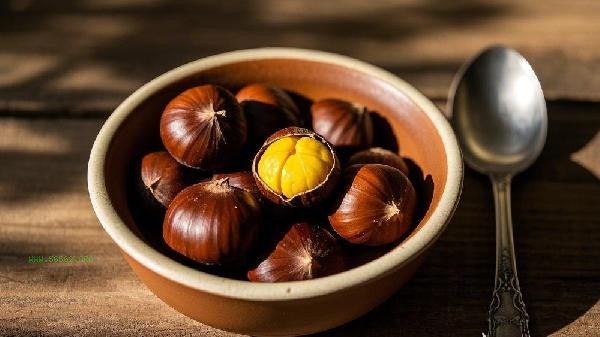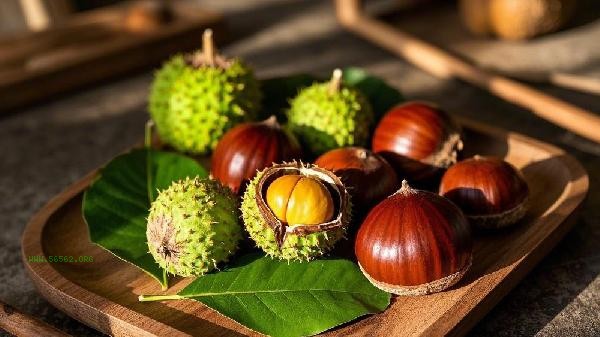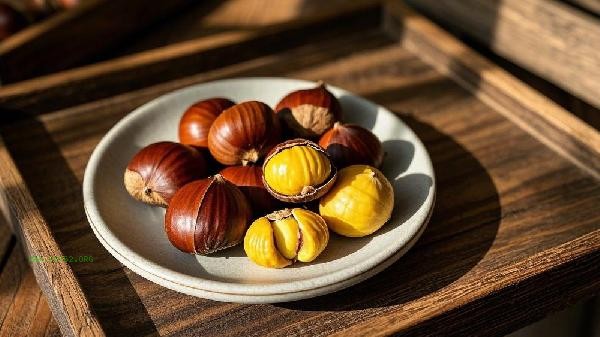The main methods for fast and clean peeling of raw chestnuts include hot water soaking, knife cutting cross mouth method, microwave heating method, frozen peeling method, and steaming softening method.

1. Hot water soaking method
Soak raw chestnuts in boiling water for 5 minutes, and the outer shell and inner membrane will separate from the flesh due to thermal expansion. After removing it, wrap and rub it with a kitchen towel while it is still hot. Most chestnut shells will fall off completely. This method can maintain the integrity of the fruit pulp and is suitable for cooking needs that require maintaining the shape of chestnuts. Be aware that high water temperature or prolonged soaking may cause the fruit pulp to become too soft.
2. Knife Cutting Cross Cut Method
Use a knife to make a cross shaped cut about 2 millimeters deep on the surface of the chestnut, and place it in the oven at 180 degrees for 10 minutes. High temperature will cause the shell at the incision to naturally burst, and after cooling, it can be easily peeled off along the crack. This method can avoid the stickiness of the fruit pulp, especially suitable for sugar fried chestnut pretreatment. Attention should be paid to the safety of tool use during operation.
3. Microwave heating method
Spread the chestnuts flat in a specialized container for microwave ovens, heat on high heat for 30 seconds, and then remove them. Heat will increase the internal steam pressure, causing separation between the outer shell and the flesh. This method only takes 1 minute for the entire process and is suitable for quickly processing small amounts of chestnuts. Attention should be paid to adjusting the time of microwave ovens with different powers, as excessive heating may cause chestnut cracking.

4. Freeze peeling method
After freezing the raw chestnuts for 2 hours, remove them and let them stand at room temperature for 5 minutes until the surface is slightly melted. At this point, the brittleness of the outer shell increases while the inner membrane still adheres to the flesh. Press the bottom of the chestnut with your thumb to squeeze out the intact kernel. Low temperature treatment can maximize the preservation of the original flavor of chestnuts and is suitable for making pastry fillings. Excessive freezing time can cause synchronous shrinkage of the fruit pulp, affecting the separation efficiency.
5. Steaming and Softening Method
Chestnuts are spread flat in a steamer and steamed for 8 minutes. Steam penetration softens the outer shell fibers. After cutting open the top with scissors, the outer shell and brown inner membrane can be peeled off together. This method peels off the smoothest surface of the nuts and is suitable for fine processing such as making chestnut puree. The steaming time should be adjusted according to the size of the chestnut, as excessive steaming can cause the kernels to break.

It is recommended to wear non slip gloves when handling raw chestnuts to avoid scratches, and wash hands promptly after contact with tannins in fresh chestnuts. The peeled chestnuts can be soaked in light salt water to prevent oxidation and discoloration. If long-term storage is required, it is recommended to drain the water and freeze. The thickness of chestnut shells varies greatly among different varieties, and the above methods can be combined according to the actual situation. It is recommended to use the knife cutting cross mouth method first for sugar fried chestnuts, and for stewing purposes, the steaming softening method can be chosen to retain more juice.








Comments (0)
Leave a Comment
No comments yet
Be the first to share your thoughts!